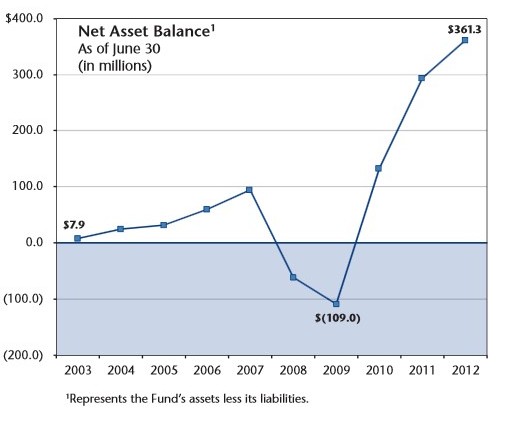The nonpartisan Legislative Audit Bureau (LAB) recently completed its triennial audit of the Injured Patients and Families Compensation Fund, housed at the Office of the Commissioner of Insurance.
The Fund provides participating physicians and other health care providers in Wisconsin with secondary medical malpractice insurance to cover claims that exceed the coverage limits of their primary insurance. Statutes require most health care providers that operate or have permanent practices in Wisconsin to maintain primary malpractice coverage of $1 million for each incident and $3 million per policy year, and to participate in the Fund by paying assessments that help to fund claims greater than these amounts.

Key Facts and Findings
- Since its inception, the Fund has paid $807.8 million for 660 claims [from its inception in 1975 through June 30, 2012].
- The Fund reported a net asset balance of $361.3 million as of June 30, 2012.
- The Fund accumulated $1.0 billion in cash and investments as of June 30, 2012.
- The Wisconsin Supreme Court ruled that a $200 million transfer from the Fund to the State was unconstitutional.
- In August 2011, the State transferred $233.7 million to the Fund from the General Fund.
Recommendations
We include recommendations for the Office of the Commissioner of
Insurance to:
- work with the Board of Governors to establish a target range of minimum and maximum net asset balances for the Fund and to establish a process to evaluate the appropriateness of the targets on an annual basis (p. 19); and
- reassess the Fund’s current financial reporting process and take steps to establish and document clear procedures for completing and verifying the accuracy of the Fund’s financial statements, including:
- comparing actual results of the Fund’s financial activities to expectations;
- reconciling and verifying key account balances to supporting or corroborating sources of information;
- reviewing the continued accuracy of formulas and links in spreadsheets; and establishing checklists to document that critical steps are completed (p. 22).